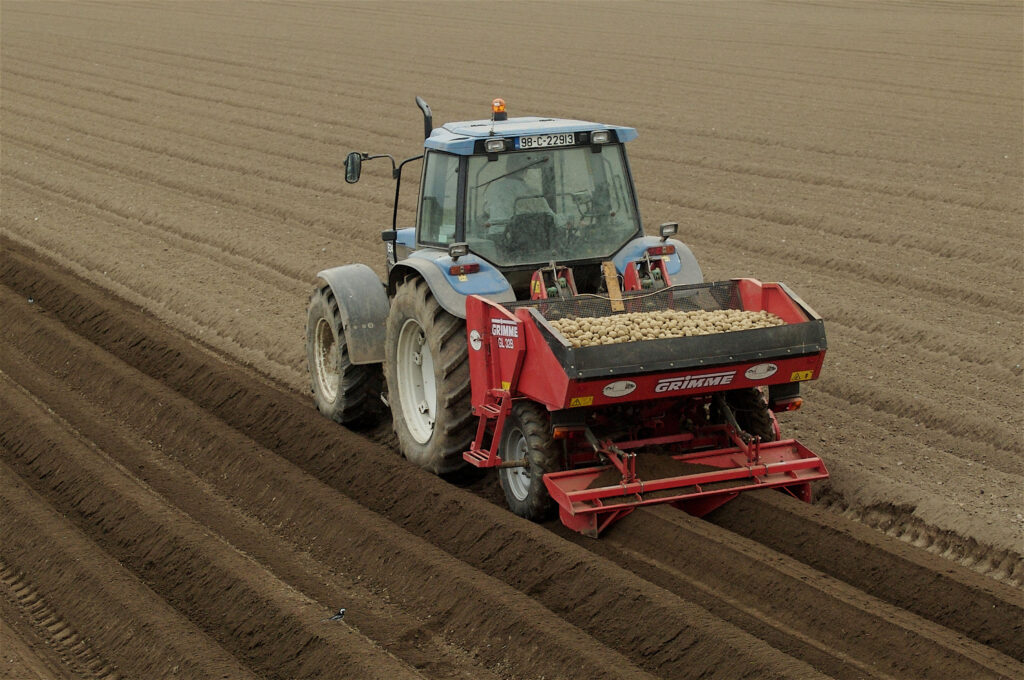Ground conditions remain extremely challenging across the country for soil cultivation and subsequent crop establishment. Field work under such conditions can also leave the soil prone to traffic damage.
Crops and mechanisation researcher at Teagasc Oak Park, Dermot Forristal, has clear advice on how best to secure the best possible levels of crop establishment in a difficult spring.
Forristal said: “Growers will seek to balance the need to get a crop in as soon as possible with the need to have acceptable seedbed conditions.
“They will also want to avoid subsurface compaction and to get a good proportion of the planned area sown.”
While there are concerns about the ability to get crops sown in a very short window, a more fundamental question arises: ‘Do we have sufficient machine capacity for cultivation and sowing in a two-week period?’
Crop establishment
According to Forristal, ploughing is the major concern as its high power demand usually results in a lower work-rate/labour/tractor unit.
A critical difference this year, is the lack of a significant proportion of ploughing being completed in advance of secondary cultivation and sowing.
The Teagasc representative continued: “Increasing our ability to plough quickly is not easy. We should ensure that every available plough, tractor and labour unit is mobilised.
“The bigger challenge though is skilled labour; silage contractors may have some leads, but all contractors will be busy.
“If labour is available, shift-working with the plough may be an option, but only if there are sufficient competent operators to do it safely.”
Forristal also points to the benefits of ploughing shallow (175-220mm), if there is no need for excessive depth, will speed the job up a little if power is limiting.
Likewise, make sure there is nothing to slow the plough down is also significant. Issues here include gates, fallen boughs, no support and diesel availability.
Fallow headlands
According to Forristal, the option of leaving headlands fallow is one that could be considered in current circumstances. However, decisions of this nature should be taken by growers in tandem with their advisors.
“This will speed up all operations, particularly ploughing, much more than the area reduction, as headland work, particularly ploughing, can be slow,” Forristal further explained.

“It’s feasible as it will often remove the lowest-yielding area of the crop in a season where spring crop margins could be very low.
“Tilling, sowing and spraying can be done without headland runs too. But, the fertiliser spreader should cross the ploughing for the end run to give an even application across the sown end.”
Forristal is also advising the use of markers to ensure all machinery work ends at the same point and that it is mapped properly for allocation to ‘fallow’ or ‘crop’ in your BISS application.
Non-inversion machines
If there are non-inversion type min-till machines available for deeper working, Forristal believes these can be exploited instead of the plough, to speed up the initial cultivation.
He said: “Tine or tine and disc combination machines may be best as 150mm depth is probably needed to help the ground dry out.

“These machines should be used carefully to avoid creating wet loose lumps. Disc-only machines may not achieve the depth and may compact below the disc in these conditions.”
According to the Teagasc, machinery specialist, a 200hp tractor and five furrow plough may plough 1.4ha (3.5ac)/hour. However, the same tractor and driver with a 4m tine and disc cultivator would more typically cover 3.5ha (8.5ac)/per hour.
“Growers should ensure the following drilling unit can sow in the conditions created by the cultivator,” he stressed.
The management of drying soils
Given the weather conditions of recent months, the following rule of thumb applies: when working the soil, it’s likely to be wet underneath, while drying out quickly on top:
As a consequence, growers should use lighter tractors and consider wheel / tyre sizes /dual wheels etc., if they have the option.
Teagasc also advised the use the minimum tyre pressures for the load being carried.
Switching headlands around is an option to avoid turning on wetter headland. In addition, work should be planned carefully to reduce passes and all associated traffic.
Growers should conserve surface moisture as much as possible and roll post sowing when conditions allow.
